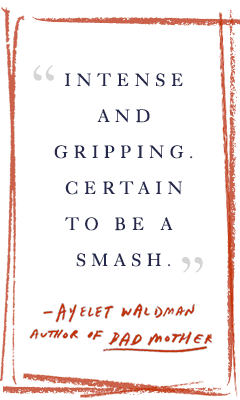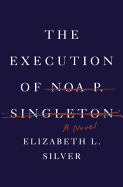The Execution of Noa P. Singleton
by Elizabeth Silver
As titles go, Elizabeth L. Silver's The Execution of Noa P. Singleton is bluntly straightforward, and the directness continues as Noa introduces herself to us from death row in the Pennsylvania Institute for Women, where she's been sentenced after the murder of Sarah Dixon. Her guilt is never in question: "I know I did it," she says. "The state knows I did it, though they never asked why... I was lucid, attentive, mentally sound, and pumped with a single cup of decaffeinated yellow zinger tea when I pulled the trigger. Post-conviction, I never contested that once."
And yet, six months before her scheduled execution, Noa receives a visit from Oliver Stansted, a British attorney doing a stint at a nonprofit organization specializing in death row cases. She's not interested in his help, until he mentions that his boss is Marlene Dixon, Sarah's mother--who petitioned the court vigorously for the death penalty at Noa's sentencing. Ten years later, though, Marlene has created Mothers Against Death, or M.A.D. ("Isn't that a drunk driving group?" Noa scoffs), in an effort to secure clemency for her daughter's killer.
At this point, the straightforwardness ends. It's clear from their initial conversation that both Noa and Marlene are holding back from each other--and from Oliver--and Silver dedicates the novel to exposing their secrets. Some of the revelations come early; it's not giving much away, for example, to let you know that Marlene isn't really acting from a newfound compassion--if anything, she wants to make Noa's life worse. "Noa will never see the light of day," she assures Sarah in the first of several letters spilling out her thoughts. Life imprisonment, Marlene believes is, "a far worse punishment for taking you away than getting to leave this life before me."
Marlene's letters serve as a punctuation to Noa's telling of her life story--and, as with so many gallows broadsides, she's got quite the story to tell. "The only child of Miss Teenage California 1970 and a weeklong sperm donor whose name my mother claimed she couldn't recall," Noa's earliest memory is of being dropped on her head at the age of 10 months, an accident which her mother covers up by calling in a phony robbery. A paramedic assures Noa's mom that she's just suffered a bruise; in reality, she informs us, "my arm never properly healed."
After a childhood and adolescence of similar not-so-benign neglect, Noa graduates salutatorian from her high school and receives a postcard from her father in Philadelphia. She enrolls at the University of Pennsylvania, though her college career is cut short by a horrific accident that approaches the status of an urban legend among her fellow undergraduates. Then, after a string of hang-up calls, her estranged father finally gets in touch. Noa approaches the reunion as cynically as you might expect under the circumstances, but that's not why the situation deteriorates until it starts to echo a classical tragedy.
Though Noa's story is ultimately tragic, it is flecked with dark humor, from her mother's string of "athletic" boyfriends ("and by runners, I mean competitive speed-walkers") to the moment in her trial when a police officer established her hardened criminal tendencies by recounting how she shoplifted a pack of gum and a bra as a teenager. From her cell, Noa comments on her fellow inmates and braces herself for the inevitable outcome, meditating on such matters as her final meal: "To be honest, I think I'm choosing [escargot] because I want to watch everyone mispronounce it."
Because Noa's guilt is never in question, The Execution of Noa P. Singleton depends on her strength as a character--and, to a lesser extent, Marlene's--to keep us caring about the story long enough to get to the why of Sarah's death, and Silver works hard to establish Noa as a sympathetic anti-heroine, to help us understand why Noa has accepted the outcome of her trial without resistance. "America is not against the death penalty," Noa says. "And to be honest, I'm not entirely certain I am, either." But why does Noa believe that she deserves to die, and why does she eventually allow Oliver to raise her hopes--even just a little? And what secrets is she taking with her to the grave? With her debut novel, Silver gives Noa a voice powerful enough to make us want to know the answers. --Ron Hogan








